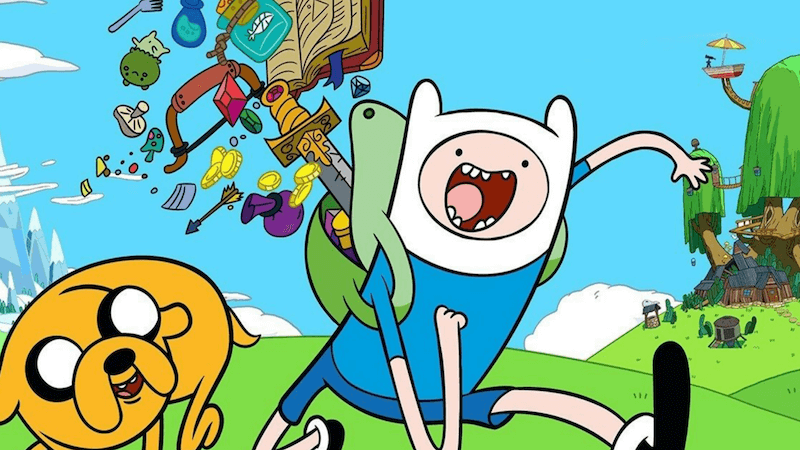Are you sure you are getting the most out of your revenue streams?
We call the place where there is a match between your business ambition and your customers' needs - the sweetspot. Because in that sweetspot lies value for everyone and the foundation for successful digital growth. It is a win-win situation.
But how do you get there, and how do you turn that sweetspot into repeatable revenue. No two projects are the same - there is no magic bullet - but over the years we have identified four areas which should be measured and improved to drive growth.
We call this four point framework CaRDS:
-
Customer Conversion
-
Customer Relationships
-
Customer Data
-
Customer Satisfaction
The CaRDS Framework applies equally to new product development as existing platform owners. Indeed these areas often form the audit framework to understand why your app or site is not performing to the level you expect.
Let us show your business can benefit from the CaRDS framework.
We’re offering a limited number of 30 minute drop-in sessions for product owners and programme leads to delve deeper into your own customer goals - if you would like to book this in, please click on one of the buttons throughout this piece.
Customer conversion
The most recognised metric for measuring success is goal conversions. Think of a traditional funnel:
-
Acquire new customers
-
Convert them to customers
-
Retain them over time
Conversion metrics cover all these areas. How effective are our new customer acquisition efforts? Which channels deliver the highest volume? What activities show a high propensity to convert? What activities suggest a customer will churn
For companies with an existing digital platform, a clear understanding of conversion metrics is critical, but often missed.
For example when we started to support Mazda with their existing website, a first step was a detailed usability study. The business had clear performance goals for success - book a test drive for example - we added clarity on how best to optimise the conversion paths customers undertook along the way.
Likewise in our work with Vita Coco in a website overhaul in late 2019, the ambition was on one hand to bring branding in line with updated packaging; but the other and far more measurable was an increase in sales. Whilst Vita Coco still work through their own direct-to-consumer model, they leverage Amazon to deliver. One of their key conversion metrics here was the drive of traffic from the brand site to the Amazon store. (the result...an over 200% increase)
Customer Conversion - framework guidance
-
Have you mapped your customer journey(s) from end to end?
-
What are the key conversion points in the journey?
-
How do you measure, report, and use these to inform opportunities to test ways to drive improvement.
Customer relationships
Augustinus Bader approached us in early 2020 to optimise their e-commerce store. They could see a shift from retail to online, and felt the site could perform much better.
A key difference to Vita Coco is that Augustinus supply direct-to-consumer. This provides the opportunity to build a subscription model for their business.
Subscriptions for consumer goods were much harder to achieve in a pre-digital world. But today it seems much more straightforward - add a subscribe option in checkout.
But the reality is that a subscription is a fundamental shift in behaviour. It is not about a transaction, but about a relationship. To convince consumers to subscribe you need to convince them to have a relationship with you.
This raises your proposition beyond price or feature competition, and closer to aligning your brand with your customers beliefs. It focuses on benefits to the customer. And it requires you to continue to focus on delivering benefits over the longer term.
Customer Relationships - framework guidance
-
Understand your customer needs - what is the *real* benefit your product or service provides?
-
How can you quantify this?
-
What are the metrics of a successful relationship for your business? (e.g. increased subscription revenue as a % of total revenue; increased in overall time spent in product; etc)
Customer Satisfaction
ITV, the UK's oldest and largest commercial terrestrial television network, is a company forged in the world of linear broadcasting. Advertising was at the heart of their business and their revenue.
Today's consumers have much more choice than they did 20 years ago. Content is on demand, on any device and available through (you guessed it)... subscriptions from the likes of Netflix, Amazon and Disney.
ITV cannot give up ad revenue. But their viewers were now familiar with the new world of high quality on-demand content without ads, and became increasingly vocal about the intrusion of advertising into content
Understanding this and leveraging a subscription model (Hub+ - where users pay to remove ads) seems obvious, but is fundamentally against the advertising foundations of the business; it just simply wouldn't have been on a strategic roadmap. Hub+ provides ITV with revenue in addition to advertising, whilst keeping customers happy - a win-win case for all involved.
The metric to drive change was customer satisfaction. Overall customer satisfaction - in this case measured in app store ratings - is a valuable way to understand how you can better align your offering with customer needs.
ITV is fortunate - they have clear signals about satisfaction; for your company the more pressing issue may be access to that feedback at all. The response to ‘when did you last speak to your customers’ is often met with confusion that we’re asking the question in the first place.
Small changes can have big impacts. Unhappy customers ultimately mean lost revenue. But aim to delight and growth will come.
Customer satisfaction - framework guidance
-
How do you measure satisfaction today?
-
What insights do you have that can drive incremental change?
-
What are the core elements of the customer experience you offer?
All drop in sessions include access to the CaRDS framework toolkit, including Customer Audit, Business Case builder, and Insights Roadmap. Book here.
Customer data
Rolls-Royce’s shift to Power-as-a-Service ('Power by the Hour') was driven by their access to real-time data from engines. This data meant they could monitor performance far more effectively than an airline could, enabling better engine performance, lower maintenance costs and higher utilisation of aircraft.
In this case, the data came from IoT sensors which captured incredible data about the engine. Applying a similar model to other sectors can appear difficult, but in reality is about building a system which provides you with access - first-hand access - to customer data.
This is a rich area for all sectors to explore. Consumer-goods companies for example, from pet food to toothpaste have traditionally worked through retailers like Tesco, Walmart and Amazon to deliver the products. And it is these retailers who hold the data about consumer behaviour.
But imagine if you could build a business where you have direct access to customers, where you can connect with them to understand behaviour, preferences and ultimately create tailored personalised products that are appropriate for their family, their lifestyle, their needs. Done properly it is win-win - new market opportunities and revenue streams for your business, and customers have products that are made for them.
Let's not ignore the fact that customer data can be a bad word, but that is only because of irresponsible companies exploiting unregulated environments. Your business can and should have a goal of understanding users first-hand, and any investment in new products should include this as a clear aim.
Customer data - framework guidance
-
What data do you currently have on your customers?
-
What data do you need to drive innovation in your sector?
-
What could you achieve with 100% insight into customers?
If you would like to explore how customer metrics and the CaRDS framework could transform your business, just click below.















